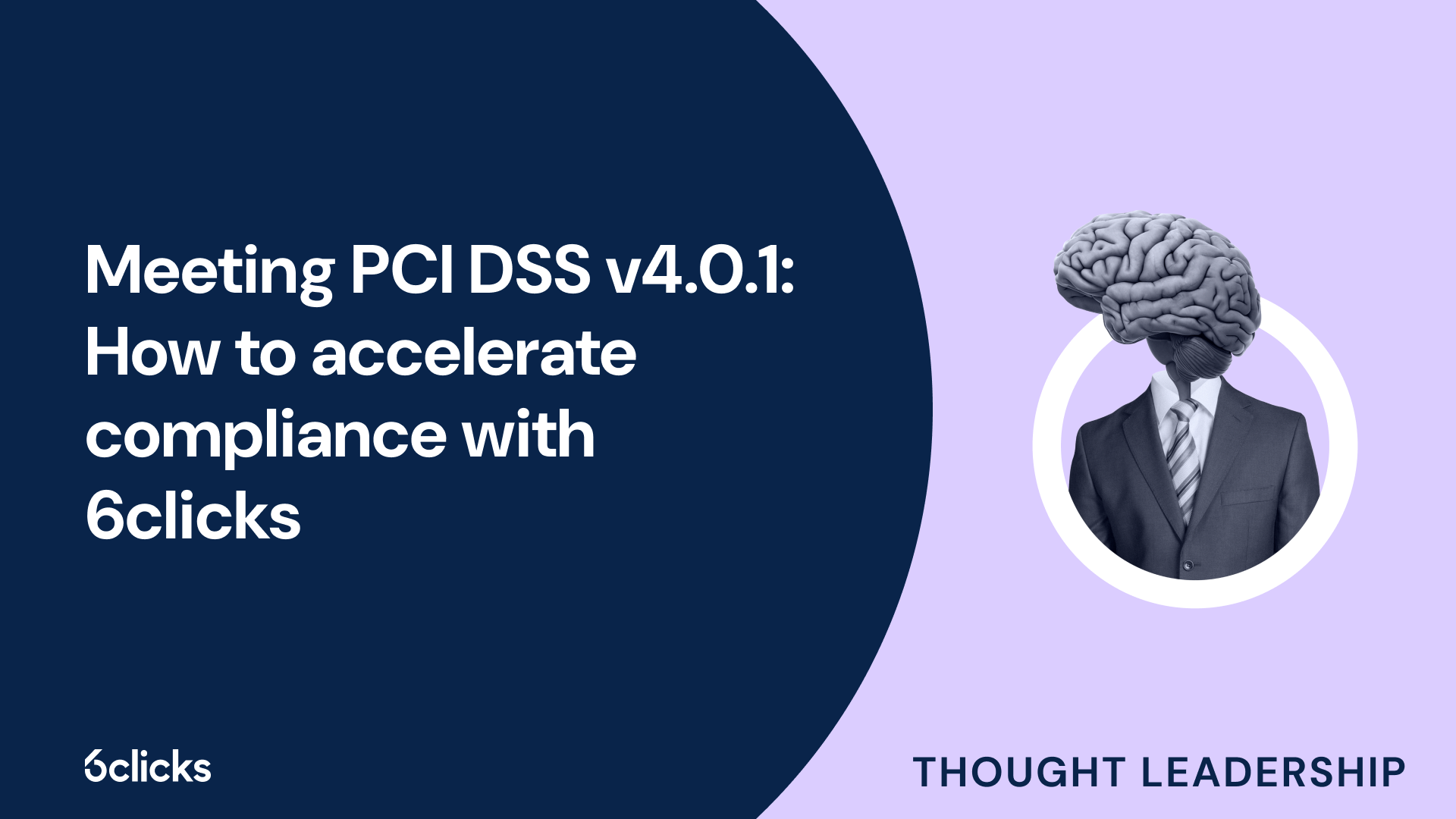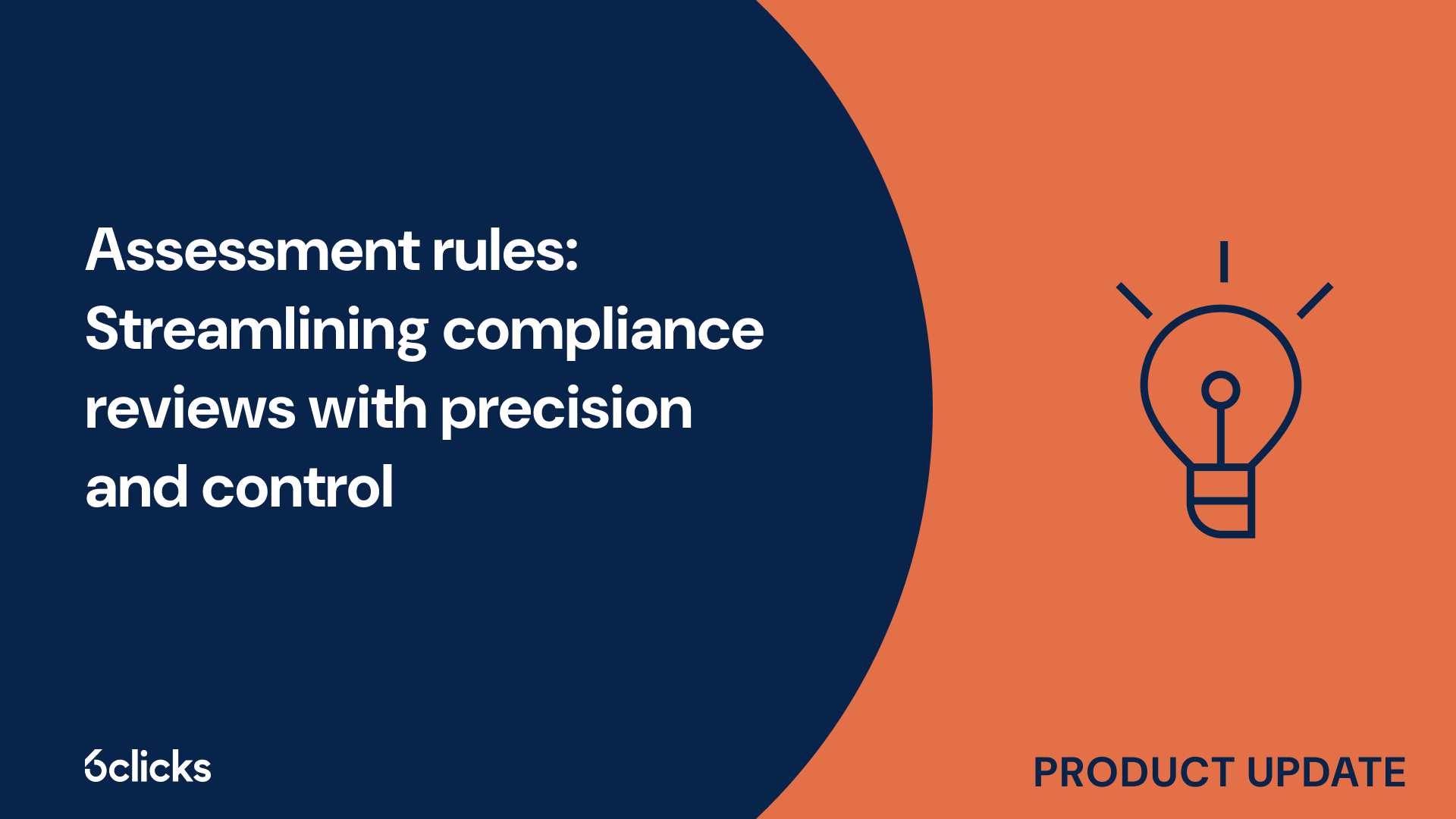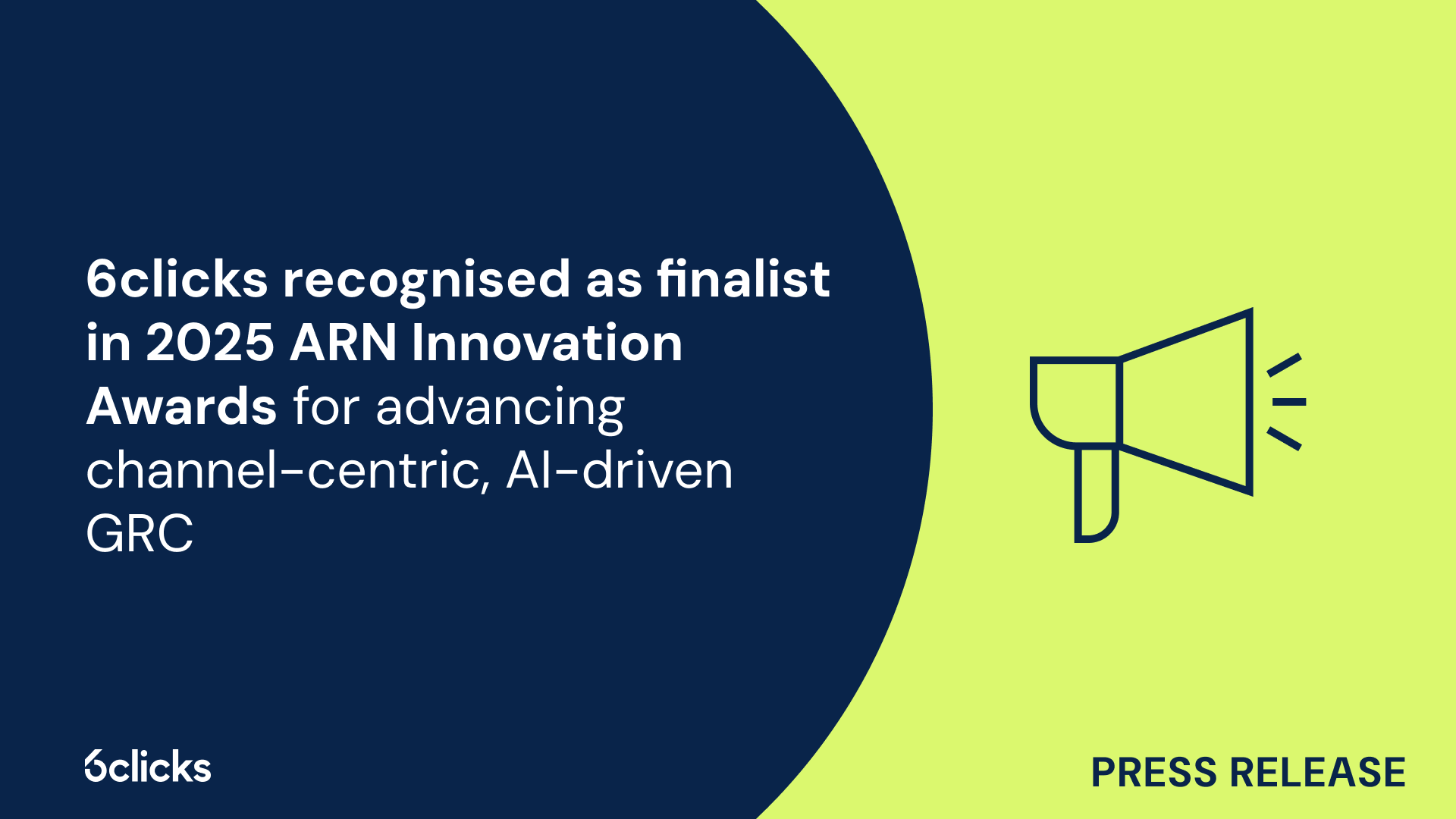The GRC buyer’s guide for 2025: Building resilience with AI-powered, federated solutions
Discover the ultimate GRC buyer's guide for 2025! Uncover how AI-powered, federated solutions transform compliance and security management for industries like government, aerospace, banking, and more. Learn about centralized control, continuous compliance, and advanced cyber GRC capabilities. Download now!
-1.png?width=200&height=249&name=Group%20193%20(1)-1.png)
The GRC buyer’s guide for 2025: Building resilience with AI-powered, federated solutions
Definition of NIST
The National Institute of Standards and Technology (NIST) is a non-regulatory federal agency within the United States Department of Commerce. NIST is responsible for developing and promoting measurement standards, guidelines, and technologies to enhance innovation and competitiveness. In the context of cybersecurity, NIST provides a comprehensive framework for organizations to assess and improve their information security posture. The NIST Cybersecurity Framework (CSF) is widely recognized and adopted by both public and private sectors as a best practice for managing and mitigating cybersecurity risks. The framework consists of a set of standards, guidelines, and best practices that organizations can follow to better protect their information and systems from cyber threats. NIST also publishes the Special Publication (SP) 800-series, which provides guidance on specific security topics such as risk management, security controls, and incident response. Overall, NIST plays a crucial role in establishing the foundation for effective cybersecurity practices in various industries.
Strictly follow the instructions to write about Definition of FedRAMP
Definition of FedRAMP
FedRAMP, which stands for Federal Risk and Authorization Management Program, is a government-wide initiative established by the General Services Administration (GSA) to provide a standardized approach to security assessments, authorization, and continuous monitoring for cloud-based services. Its main purpose is to ensure that cloud service providers (CSPs) meet rigorous security standards, reduce cybersecurity risks, and provide federal agencies with secure cloud solutions.
FedRAMP plays a crucial role in the procurement of cloud services for federal agencies by providing a centralized approval process. It helps agencies streamline their procurement process by offering a marketplace of pre-vetted CSPs that have undergone the necessary security assessment and authorization (ATO) process. This reduces the burden of conducting individual security assessments for each agency, saving time and resources.
To comply with FedRAMP, CSPs must meet a comprehensive set of security requirements, including control implementation and monitoring for cloud products and services. These requirements are based on NIST (National Institute of Standards and Technology) security standards, specifically the NIST 800-53 control families. CSPs are also required to perform ongoing monitoring and reporting to ensure that their systems remain compliant and secure.
Major differences between NIST and FedRAMP
NIST (National Institute of Standards and Technology) and FedRAMP (Federal Risk and Authorization Management Program) are both important frameworks in the field of cybersecurity. Although they share some similarities, there are major differences between the two in terms of their purpose, target audience, and scope.
NIST is a comprehensive set of security controls that apply to all federal information systems. It provides a standardized approach to security assessments and compliance requirements for federal agencies and their contractors. NIST focuses on establishing a baseline of security controls and guidelines that can be implemented across various systems and technologies.
On the other hand, FedRAMP is specifically designed for cloud service providers (CSPs) and the federal agencies that use their services. Its primary purpose is to streamline the procurement process of cloud services for federal agencies by providing a centralized approval process. FedRAMP offers a marketplace of pre-vetted CSPs that have undergone the necessary security assessment and authorization process. It focuses on assessing and authorizing cloud solutions according to a set of standardized security requirements.
In terms of scope, NIST covers a wide range of cybersecurity areas and applies to all federal information systems. It provides a comprehensive framework for securing information and systems across different technologies and environments. In contrast, FedRAMP has a narrower scope and specifically addresses the security requirements for cloud-based services used by federal agencies. It focuses on the unique security risks and controls associated with cloud computing.
Understanding NIST
The National Institute of Standards and Technology (NIST) plays a crucial role in establishing cybersecurity standards and guidelines for federal agencies and their contractors. NIST provides a comprehensive set of security controls that apply to all federal information systems, offering a standardized approach to security assessments and compliance requirements. Their focus is on defining a baseline of security controls and guidelines that can be implemented across various systems and technologies. NIST's framework covers a wide range of cybersecurity areas and applies to all federal information systems, providing a comprehensive framework for securing information and systems across different technologies and environments. By following NIST guidelines, federal agencies and their contractors can ensure a consistent and effective approach to cybersecurity and help protect sensitive government information.
Overview of the national institute of standards and technology (NIST)
The National Institute of Standards and Technology (NIST) is a federal agency that plays a crucial role in setting security standards for information systems used in federal government applications. Founded in 1901, NIST's primary mission is to promote and advance U.S. innovation and industrial competitiveness. As part of this mission, NIST also develops standards for securing federal information systems and ensuring their compliance with applicable laws and regulations.
NIST's security standards are widely recognized and implemented in various compliance frameworks, with one prominent example being the Federal Risk and Authorization Management Program (FedRAMP). FedRAMP provides a standardized approach to security assessments, authorization, and continuous monitoring for cloud service providers seeking to offer their solutions to federal government agencies. It incorporates NIST's security controls and requirements, making NIST an essential component of FedRAMP compliance.
NIST's influence on federal government applications stems from its dedicated research, expertise, and collaboration with industry stakeholders. By providing comprehensive security standards, NIST helps federal agencies and cloud service providers mitigate security risks and bolster their overall security posture. Additionally, NIST's ongoing efforts to update and improve its security standards reflect its commitment to staying abreast of emerging threats and technological advancements.
Security standards developed by NIST
NIST, or the National Institute of Standards and Technology, has developed comprehensive cybersecurity standards to enhance the security posture of organizations. These standards, known as the NIST Cybersecurity Framework (NIST CSF), provide a set of guidelines and best practices for managing and improving cybersecurity risks.
The NIST CSF consists of a core set of activities and outcomes that are intended to help organizations identify, protect, detect, respond to, and recover from cybersecurity incidents. It is a flexible framework that can be customized and adapted to the specific needs and risks of each organization. The framework provides a common language and taxonomy for organizations to communicate about cybersecurity, both internally and externally.
Enforcement of NIST's security standards is carried out through the Federal Information Security Management Act (FISMA). FISMA requires federal agencies to develop, implement, and maintain an agency-wide information security program. This program must be based on a risk management framework that includes the adoption of NIST's security standards and guidelines. FISMA also requires federal agencies to undergo periodic audits and assessments to ensure compliance with these standards.
Using the NIST CSF offers several notable advantages for organizations. Firstly, it provides a structured approach to cybersecurity risk management, ensuring that organizations have a comprehensive understanding of their risks and can prioritize their efforts accordingly. Secondly, the NIST CSF allows organizations to align their cybersecurity efforts with industry best practices and standards, enhancing interoperability and collaboration. Finally, the framework enables organizations to demonstrate their cybersecurity maturity and resilience to stakeholders, such as clients, partners, and regulatory bodies.
Benefits of using NIST standards in government agencies
Using NIST standards in government agencies offers numerous benefits, particularly in the realm of cybersecurity and IT systems. NIST (National Institute of Standards and Technology) provides comprehensive guidelines and best practices for organizations to enhance their cybersecurity posture and protect sensitive data in federal contexts.
By adhering to NIST standards, government agencies can ensure that their IT and cloud systems meet industry-leading security requirements. NIST's guidelines cover a wide range of areas, including risk management, access control, incident response, and security awareness training. These standards outline proven practices that can bolster the security and resilience of government systems.
The significance of NIST standards is further reinforced through FedRAMP (Federal Risk and Authorization Management Program) regulations. FedRAMP, based on the Federal Information Security Management Act (FISMA) and the Federal Information Security Modernization Act (FISMA), establishes minimum security and compliance standards for cloud service providers serving federal agencies. FedRAMP relies heavily on NIST guidelines, particularly NIST Special Publication 800-53, which outlines the security controls necessary to protect federal systems.
By meeting the minimum security, reporting, and compliance standards set by NIST, government agencies can ensure the protection of sensitive information and demonstrate compliance with federal requirements. Adherence to NIST 800-53 specifications not only enhances overall cybersecurity posture but also helps agencies build trust with stakeholders and foster collaboration with other agencies. Ultimately, leveraging NIST standards in government agencies provides a robust foundation for securing IT and cloud systems in federal contexts, safeguarding critical data, and promoting effective risk management.
Understanding FedRAMP
The Federal Risk and Authorization Management Program (FedRAMP) is a government-wide program that provides a standardized approach to security assessments, authorizations, and continuous monitoring for cloud products and services. It was established to streamline the process of assessing and authorizing cloud solutions for use by federal agencies, reducing duplication of efforts and improving the transparency of security practices. FedRAMP is built on the foundation of the National Institute of Standards and Technology (NIST) guidelines, bringing together the best practices outlined in NIST Special Publication 800-53 to ensure cloud service providers meet the required security standards for federal systems. With the ever-increasing use of cloud technology in government agencies, understanding the principles and requirements of FedRAMP is essential for both cloud service providers and federal agencies to ensure the protection of sensitive government data and compliance with government compliance standards.
Overview of the federal risk and authorization management program (FedRAMP)
The federal risk and authorization management program (FedRAMP) is a government-wide initiative that provides a standardized approach to security assessments, authorization, and continuous monitoring for cloud services. It was established to address the security risks and compliance requirements associated with the adoption of cloud computing by federal agencies.
FedRAMP is closely connected to the National Institute of Standards and Technology (NIST) and leverages its security standards and guidelines. It provides a framework that federal agencies can use to evaluate cloud service providers and ensure the security of their cloud-based solutions.
The primary objectives of FedRAMP include ensuring the privacy and security of sensitive government data, promoting transparency and standardization across the federal government, and reducing cybersecurity risks associated with cloud computing.
The FedRAMP authorization process involves a rigorous assessment of a cloud provider's security controls and risk management practices. This process results in a FedRAMP authorization to operate (ATO), indicating that the provider has met the baseline controls and compliance requirements defined by the program.
FedRAMP emphasizes risk management throughout the entire lifecycle of cloud-based services. It requires continuous monitoring and ongoing assessments to identify and address any potential security vulnerabilities or threats. This proactive approach helps to mitigate security risks and ensures a high level of security for federal agencies.
Security requirements set by FedRAMP
FedRAMP sets stringent security requirements to ensure the protection of sensitive government data and promote the standardization of cloud services across federal agencies. Cloud service providers undergo a thorough assessment process to obtain FedRAMP authorizations.
There are two types of FedRAMP authorizations. The Provisional Authority to Operate (P-ATO) is a temporary authorization given when a cloud service provider demonstrates compliance with the baseline controls. The full Authority to Operate (ATO) is granted once the provider successfully completes the rigorous assessment.
To distinguish between different levels of compliance, FedRAMP designates cloud service providers as either 'FedRAMP Ready' or 'FedRAMP Authorized.' The 'FedRAMP Ready' designation signifies that a provider is actively working towards obtaining an ATO and is undergoing the necessary assessments. On the other hand, the 'FedRAMP Authorized' designation is given when a provider has completed the necessary assessments and is compliant with all security requirements.
There is a strong connection between FedRAMP and the National Institute of Standards and Technology (NIST). FedRAMP leverages NIST Special Publications (SPs), specifically SP 800-53 for security controls and SP 800-37 for the risk management framework. These guidelines ensure that cloud service providers meet the standardized security requirements set by NIST.
FedRAMP has recently introduced updates to streamline the authorization process. This includes the Readiness Assessment Report (RAR) Guide, which helps cloud service providers prepare for and successfully complete the assessment. Additionally, the CSP Authorization Playbook provides guidance and resources to assist providers in meeting the security requirements effectively.
Compliance requirements for cloud service providers through FedRAMP
Compliance requirements for cloud service providers are essential to ensure the security of data and systems in the federal government. The Federal Risk and Authorization Management Program (FedRAMP) provides a clear and consistent framework for evaluating and selecting cloud service providers (CSPs) that meet the stringent security standards required by federal agencies.
FedRAMP establishes compliance requirements that CSPs must adhere to in order to achieve authorization. These requirements encompass a wide range of security controls, risk assessment processes, continuous monitoring, and control implementation. By following these requirements, CSPs can demonstrate their commitment to maintaining the security of government data and systems.
The FedRAMP program plays a crucial role in promoting the adoption of secure cloud services across federal agencies. Its rigorous evaluation process ensures that CSPs meet the standardized security requirements set by the government, providing assurance that their cloud solutions are reliable and secure. This, in turn, fosters a competitive market for secure cloud services, encouraging innovation and continuous improvement in the industry.
The benefits of the FedRAMP program are substantial. It helps federal agencies easily assess and select CSPs that meet the necessary security standards, reducing the time and resources required for evaluation. Furthermore, it enhances the security of data and systems by establishing a baseline of security controls that must be implemented by CSPs. By ensuring compliance with these requirements, the risk of security breaches and data loss is significantly reduced.
Comparison between NIST and FedRAMP
When it comes to cloud security in the federal government, two key frameworks stand out: NIST (National Institute of Standards and Technology) and FedRAMP (Federal Risk and Authorization Management Program). While both aim to safeguard government data and systems, there are important differences that distinguish them. Understanding these differences is crucial for federal agencies and cloud service providers (CSPs) looking to comply with government standards and regulations. Let's explore the comparison between NIST and FedRAMP to gain a better understanding of their respective roles and requirements in ensuring the security of cloud-based services for federal agencies.
Common control families used by both programs
Both NIST (National Institute of Standards and Technology) and FedRAMP (Federal Risk and Authorization Management Program) utilize common control families to assess cloud service providers for authorization. These control families serve as a framework to evaluate the security of cloud-based services.
Both NIST and FedRAMP use a standardized set of control families, which include administrative, physical, and technical controls. These control families cover various aspects of security, such as configuration management, incident response, access control, and system and information integrity.
In the assessment process, cloud service providers are required to implement and demonstrate compliance with the control families identified by NIST and FedRAMP. This includes providing control implementation details and control statements for each control family.
NIST and FedRAMP have aligned their impact levels, which categorize systems based on the potential impact of a security breach. This alignment ensures that cloud service providers are assessed against the appropriate security requirements based on the sensitivity of the information they handle.
By using common control families, NIST and FedRAMP provide a consistent approach to security assessments for cloud service providers. This ensures that federal agencies can effectively evaluate and authorize cloud solutions that meet the regulatory requirements and comply with government compliance standards.
Approach to security assessments used by each program
NIST and FedRAMP have distinct approaches to security assessments in order to ensure the protection of sensitive government information and compliance with government compliance standards.
The National Institute of Standards and Technology (NIST) employs a risk management framework (RMF) when conducting security assessments. This framework follows a six-step process: categorization, selection of security controls, implementation, assessment, authorization, and continuous monitoring. Under the RMF, federal agencies evaluate risks, select appropriate security controls, and implement them accordingly. This approach enables agencies to effectively manage security risks and ensure the confidentiality, integrity, and availability of their IT systems.
On the other hand, the Federal Risk and Authorization Management Program (FedRAMP) focuses primarily on assessing the security of cloud service providers (CSPs) that wish to offer their services to federal agencies. FedRAMP streamlines the authorization process for CSPs by establishing standardized security requirements through a set of baseline controls and additional controls tailored to the risk of the system. The FedRAMP assessment process scrutinizes the CSP's compliance with these controls and evaluates the security rigor of their cloud-based services.
While NIST and FedRAMP share the goal of assessing security, they differ in their methods. NIST's approach is more comprehensive and covers a broad range of IT systems within federal agencies. In contrast, FedRAMP targets CSPs offering cloud solutions to federal agencies, thus focusing specifically on the unique security challenges associated with cloud computing.
Additional controls required by FedRAMP For cloud services beyond those required by NIST
In addition to the security controls required by the National Institute of Standards and Technology (NIST), the Federal Risk and Authorization Management Program (FedRAMP) incorporates additional controls specifically tailored to cloud services. These additional controls enhance the security requirements for cloud service providers (CSPs) seeking to offer their services to federal agencies.
The FedRAMP program recognizes that cloud computing introduces unique security challenges, such as multi-tenancy, data location, and virtualization. To address these challenges, FedRAMP adds a set of controls known as 'Supplemental Controls' to the baseline controls established by NIST.
These Supplemental Controls focus on areas such as incident response, vulnerability scanning, encryption, and identity and access management in the context of cloud-based services. By including these additional controls, FedRAMP ensures that CSPs implement robust security measures within their cloud environments, providing a higher level of assurance to federal agencies.
By enhancing the security requirements specifically for cloud services, FedRAMP ensures that CSPs have implemented the necessary safeguards to protect sensitive government data and systems. This helps federal agencies mitigate security risks associated with cloud computing and select CSPs that meet the unique security needs of their operations.







